Explore the Rich History and Legacy of the Valley of the Kings in Luxor, Egypt: Home to the Tombs of Pharaohs and Their Secrets, Including King Tutankhamun, King Ramses II, Ramesses III, and More. Uncover the Design and Architecture of the Tombs, Burial Practices, and Life and Death in Ancient Egypt. Get Coordinates and Information, Map, Location, and Learn More about One of the Most Significant Tourist Attractions in Luxor, Southern Egypt.
What is the purpose of the Tombs of the Valley of the Kings?
When did the Valley of the Kings begin to be built?
How to visit Valley of the Kings Luxor?
How was Valley of the Kings hidden?
How much does it cost to go to the Valley of the Kings in Egypt?
What is the difference between Valley of the Kings and Valley of the Queens?
Can you walk Valley of the Kings?
How much is it to enter Tutankhamun?
Can you take photos in Valley of the Kings?
What is the biggest threat to the Valley of the Kings?
What is the best time of year to visit the Valley of the Kings?
Why was Egypt called the Valley of the Kings?
What happened at the Valley of the Kings?
What are 4 facts about the Valley of the Kings?
What is the valley of Kings famous for?
When did the Valley of the Kings begin to be built?
The Valley of the Kings in Luxor, Egypt began to be built during the 16th century BC during the reign of the New Kingdom Pharaohs. The first pharaoh to build his tomb in the Valley of the Kings was Thutmose I, and the practice continued until the end of the New Kingdom period in the 10th century BC. During this time, the pharaohs of Egypt believed that the Valley of the Kings would provide a secure and hidden location for their tombs, away from the risk of tomb robbers. The Valley of the Kings became a significant site of Egyptology, attracting many tourists and archaeologists to uncover the secrets of Ancient Egyptian civilization and the lives of the pharaohs who once ruled the land.
What is the purpose of the Tombs of the Valley of the Kings?
The purpose of the Tombs of the Valley of the Kings was to provide a final resting place for the pharaohs and their consorts of the New Kingdom period of Ancient Egypt. The tombs were constructed as underground chambers, usually cut into the rock, to protect the mummies and their treasures from tomb robbers. The walls of the tombs were decorated with elaborate carvings and inscriptions, depicting scenes from the pharaoh’s life and the afterlife. The Valley of the Kings served as the main burial ground for the pharaohs from the 18th to the 20th Dynasties, and over 60 tombs have been discovered in the area to date. The tombs were considered to be sacred places, where the pharaohs’ spirits could reside and be protected for all eternity.
Facts about the tombs of the Valley of the Kings:
The Valley of the Kings is a burial site in Luxor, Egypt where pharaohs and powerful nobles of the New Kingdom (16th to 11th centuries BCE) were entombed. Some of the most famous facts about the tombs of the Valley of the Kings include:
Location: The Valley of the Kings is located on the west bank of the Nile River in Luxor, Egypt. It is one of the most famous archaeological sites in the world.
Number of tombs: The valley contains 63 tombs, although some of them have been lost over time or have yet to be discovered.
Purpose: The tombs were built as final resting places for pharaohs and nobles, and were meant to protect the mummies and their treasures from grave robbers.
Construction: The tombs were carved into the rock of the valley, and many of them feature complex and intricate decorations and passages.
Decorations: The walls of the tombs were often decorated with scenes from Egyptian mythology, as well as scenes depicting the pharaoh’s life and accomplishments.
Treasures: Many of the tombs contained treasures, such as jewelry, furniture, and other valuable items. Some of these treasures have been lost or stolen over time, but many still remain and are on display in museums around the world.
Most famous tomb: The most famous tomb in the Valley of the Kings is that of Tutankhamun, also known as King Tut. His tomb was discovered in 1922 by archaeologist Howard Carter, and it contained a wealth of treasures, including gold artifacts, furniture, and the famous death mask of King Tut.
the tombs of the Valley of the Kings are a testament to the wealth and power of ancient Egypt, and provide a glimpse into the religious beliefs and practices of the time.
Why were the Valley of the Kings chosen in the civilization of the Pharaohs?
The Valley of the Kings was chosen as a burial site for the Pharaohs of ancient Egypt for several reasons:
Location: The valley is located on the west bank of the Nile River in Luxor, Egypt, which was an important religious center during the New Kingdom period. The ancient Egyptians believed that the west was the land of the dead, and so it was considered a suitable location for the burials of their pharaohs and nobles.
Security: The valley is surrounded by high cliffs, which made it difficult for grave robbers to access the tombs. The ancient Egyptians believed that the afterlife was a dangerous place and that the pharaohs and their treasures needed to be protected from the dangers that might lurk there.
Resources: The valley is rich in rock and sandstone, which made it an ideal location for carving tombs into the cliffs. The abundance of natural resources also made it possible for the ancient Egyptians to construct elaborate and ornate tombs for their rulers.
Political and religious significance: The Valley of the Kings was also chosen as a burial site because of its political and religious significance. The pharaohs of the New Kingdom period were considered to be divine, and the Valley of the Kings was considered to be a sacred place where they could be interred in close proximity to the gods.
Overall, the Valley of the Kings was chosen as a burial site for the Pharaohs of ancient Egypt because of its location, security, resources, and political and religious significance. These factors made it an ideal location for the construction of elaborate and ornate tombs for the rulers of the New Kingdom period.
What are the difficulties in building tombs in the valley?
building tombs in the Valley of the Kings was a challenging task for the ancient Egyptians. Some of the difficulties they faced included:
Rock composition: The valley contains a layer of large rocks that are difficult to drill and carve, which made the construction of the tombs a slow and labor-intensive process.
Weather conditions: The valley is located in an area that experiences high temperatures and occasional flash floods, which can cause damage to the tombs and their contents.
Water seepage: The surface layer in the valley areas can cause water seepage into the tombs, which can damage the walls, decorations, and inscriptions, as well as the Coffin Texts and mummies.
Structural stability: Building tombs in the cliffs required a great deal of engineering skill, as the tombs had to be designed and constructed to withstand the forces of nature and remain stable for thousands of years.
Preserving the mummies: The ancient Egyptians believed that the preservation of the mummies was crucial for ensuring their safe passage to the afterlife. The high temperatures and occasional flash floods in the valley presented additional challenges in preserving the mummies.
Despite these difficulties, the ancient Egyptians were able to overcome them and build elaborate and ornate tombs in the Valley of the Kings. These tombs are now considered one of the greatest architectural and engineering achievements of ancient Egypt, and they continue to fascinate and inspire people around the world.
How were the tombs built in the Valley of the Kings?
The tombs in the Valley of the Kings were built using a combination of techniques, including:
Carving into the cliffs: The tombs were carved into the cliffs that surround the valley, and many of them feature complex passages and chambers. The ancient Egyptians used chisels, hammers, and other tools to carve the tombs out of the rock.
Building with stone blocks: Some parts of the tombs, such as the entranceways and chambers, were constructed using stone blocks. The blocks were transported to the valley and put into place using ramps and rollers.
Decorating the walls: The walls of the tombs were decorated with scenes from Egyptian mythology, as well as scenes depicting the pharaoh’s life and accomplishments. The decorations were created using a variety of techniques, including painting, carving, and inlaying.
Installing treasures: Many of the tombs contained treasures, such as jewelry, furniture, and other valuable items. These treasures were placed in the tombs to accompany the pharaohs and nobles in the afterlife.
Mummifying the pharaohs: The pharaohs and nobles were mummified before being placed in their tombs. The mummification process was designed to preserve the body and ensure its safe passage to the afterlife.
The building of the tombs in the Valley of the Kings was a complex and labor-intensive process that required a great deal of skill and resources. The ancient Egyptians employed a large number of workers and craftsmen to build the tombs, and the process likely took many years to complete. Nevertheless, the results of their efforts are some of the greatest architectural and engineering achievements of ancient Egypt, and they continue to be admired and studied by people around the world.
Discoveries in the Valley of the Kings:
the Valley of the Kings has been the site of many important archaeological discoveries over the years. Some of the most notable discoveries include:
King Ay’s tomb (No. 23): This tomb was discovered in 1816 by the Italian archaeologist Giovanni Belzoni.
King Sethi I’s tomb (No. 17): This tomb was discovered in 1817 by Giovanni Belzoni.
Queen Hatshepsut’s tomb (No. 42): This tomb was discovered in 1908 by the English archaeologist Howard Carter.
King Thutmose I’s tomb (No. 20): This tomb was also discovered by Howard Carter in 1908.
King Thutmose IV’s tomb (No. 43): This tomb was discovered by the English archaeologist Theodor Davis.
The tombs of Yuya and Thuya (No. 46): This tomb was also discovered by Theodor Davis.
Horemheb’s tomb (No. 57): This tomb was discovered by the English archaeologist Edward Russell Ayrton.
King Tutankhamun’s tomb (No. 62): This tomb is perhaps the most famous discovery in the Valley of the Kings, and it was discovered in 1922 by Howard Carter and a team of Egyptologists. The discovery of this tomb, which was largely intact and filled with treasures, was a major event in the history of Egyptology and sparked a renewed interest in ancient Egypt.
These discoveries have shed light on the beliefs and customs of the ancient Egyptians and have provided valuable information about their society, culture, and history. The Valley of the Kings continues to be an important site for archaeological research and exploration, and new discoveries are still being made to this day.
When did the Valley of the Kings begin to be used as a royal tomb?
The Valley of the Kings was used as a royal tomb during the New Kingdom period of ancient Egypt, which lasted from approximately 1550 to 1070 BCE. This period was characterized by a resurgence of the power and wealth of the pharaohs, and they built many monumental structures, including the tombs in the Valley of the Kings.
The exact date when the valley first began to be used as a royal tomb is uncertain, but it is believed to have started during the reign of Thutmose I, who ruled Egypt from 1504 to 1492 BCE. Thutmose I and his successors, including Hatshepsut and Thutmose III, are known to have been buried in the valley, and many other pharaohs and nobles followed their lead.
The use of the Valley of the Kings as a royal cemetery continued for several centuries, until the end of the New Kingdom period. During this time, the valley was the final resting place for many of the most powerful and influential pharaohs of ancient Egypt, and it remains an important cultural and historical site to this day.
Are there other tombs next to the Valley of the Kings?
Yes, there are several other tombs located near the Valley of the Kings. Some of the most notable tombs in the area include:
Valley of the Queens: This is a separate valley located on the west bank of the Nile, opposite the Valley of the Kings. The Valley of the Queens was used as a royal cemetery for the wives and children of the pharaohs and was also the final resting place for many nobles and high-ranking officials.
Tombs of the Nobles: This is a group of tombs located on the west bank of the Nile, near the Valley of the Kings and the Valley of the Queens. The tombs of the nobles were built for high-ranking officials and members of the royal court, and they provide important information about the lives of these individuals and their social and political status.
Ramesseum: This is the mortuary temple of Pharaoh Ramses II, one of the most powerful pharaohs of ancient Egypt. The temple is located on the west bank of the Nile, near the Valley of the Kings, and was used for religious ceremonies and as a final resting place for the pharaoh’s mummy.
Deir el-Medina: This is an ancient settlement on the west bank of the Nile, near the Valley of the Kings, that was inhabited by the workers who built the tombs in the valley. The settlement provides important information about the lives of these workers and their families, as well as the organization and technology used in the construction of the tombs.
These sites, along with the Valley of the Kings, make up a rich and diverse archaeological landscape that provides important insights into the history and culture of ancient Egypt.
What is the Royal Necropolis of the Valley of the Kings?
The Royal Necropolis of the Valley of the Kings is a term used to describe the area in the valley that was used as a royal cemetery for the pharaohs and nobles of ancient Egypt during the New Kingdom period (1550-1070 BCE). This term is often used interchangeably with the “Valley of the Kings,” as the valley is most famous for being the final resting place for the pharaohs of this period.
The Royal Necropolis of the Valley of the Kings is located on the west bank of the Nile River in Luxor, Egypt, and is comprised of several rock-cut tombs that were carved into the cliffs of the valley. The tombs were used to protect the mummies of the pharaohs and their treasures from tomb robbers, and were also used to preserve the pharaohs’ bodies for the afterlife.
Each tomb in the Royal Necropolis of the Valley of the Kings is unique, with its own design, decorations, and inscriptions, but they all share a common purpose: to provide a final resting place for the pharaohs and their treasures, and to protect their bodies and spirits for the afterlife.
The Royal Necropolis of the Valley of the Kings is one of the most famous and well-preserved archaeological sites in Egypt, and continues to attract visitors from around the world. It provides important insights into the history, culture, and beliefs of ancient Egypt, and is an important part of the rich and diverse archaeological landscape in the area.
Architectural design of the tombs of the Valley of the Kings:
The architectural design of the tombs in the Valley of the Kings is characterized by a number of features that are unique to the New Kingdom period in ancient Egypt. Some of the most notable architectural features of these tombs include:
Rock-cut design: The tombs were carved directly into the cliffs of the valley and were designed to be hidden from view. This helped to protect the tombs from tomb robbers and to preserve the mummies of the pharaohs for the afterlife.
Corridors and chambers: The tombs typically consist of a series of corridors and chambers that lead down into the cliff. The corridors were used to reach the deeper chambers of the tomb, and the chambers were used to store the treasures and the mummy of the pharaoh.
Decorative elements: The walls of the tombs are decorated with intricate and colorful drawings and inscriptions that depict scenes from Egyptian mythology and the afterlife. These decorations serve to provide guidance to the pharaoh in the afterlife and to help protect the mummy from harm.
Well shafts: Some tombs have well shafts that were used to reach the water table, which helped to prevent the walls and ceilings from collapsing. These well shafts also served to protect the tombs from flooding.
Funerary complexes: Some of the tombs in the Valley of the Kings are part of larger funerary complexes that include a mortuary temple, a courtyard, and other structures that were used for religious ceremonies and to store the treasures of the pharaohs.
These architectural features reflect the religious beliefs and practices of the ancient Egyptians and provide important insights into their culture and society. The tombs of the Valley of the Kings continue to be among the most well-preserved and fascinating archaeological sites in Egypt, and remain a source of inspiration for archaeologists, historians, and visitors alike.
Decorations in the tombs of the Valley of the Kings:
Most of the royal tombs in the Valley of the Kings were decorated with sacred inscriptions for the Sun God’s journey from darkness for 12 hours until dawn “Aaru“.
The Ancient Egyptian decoration on the walls have evolved since the reign of King Horemheb, where inscriptions were drawn for the sun god and his journey through 12 gates of the oppressor until the ascension to heaven the next day and more about Religious rituals in the Pharaonic.
The tombs of kings in the early ages do not contain many decorations, while the tombs of nobles without any decoration.
The kings of the 19th dynasty were interested in adding inscriptions and graffiti in the upper parts of the cemetery, sacred texts of the pharaohs for life in the afterlife and more about Religious beliefs in the civilization of ancient Egypt.
The Egyptian Gods, “Ancient Egyptian Gods and Goddesses” kings and all servants and slaves gather to wait for the sun god to rise to heaven to resurrect everyone, as was believed in ancient Egyptian religious beliefs and more about Funerary beliefs in ancient Egypt.
King Sethi I was interested in adding religious decorations and texts from the Book of Caverns, Book of Amduat, The Book of the Heavenly Cow, Book of Gates and The Book of the Dead with inscriptions to pray to the deceased god of the sun to bring him to a new life.
In addition to religious texts, the tombs of the Valley of the Kings were also decorated with scenes and images that depict the life of the pharaohs, including scenes of daily life, hunting, offerings to the gods, and the afterlife. The decorations were often painted or carved into the walls of the tombs, and they were intended to provide protection, guidance, and comfort to the pharaohs in the afterlife. The use of vibrant colors and intricate details in the decorations reflects the high level of artistry and craftsmanship of the ancient Egyptians. These decorations continue to be an important source of information about the beliefs, customs, and lifestyle of the ancient Egyptians.
What did the royal tombs contain?
The royal tombs of the Valley of the Kings contained many treasures, including the mummies of the pharaohs, along with their jewelry, weapons, furniture, food offerings, and other luxury items. The tombs were designed to provide the pharaohs with everything they would need in the afterlife, including protection, comfort, and sustenance.
The pharaohs’ mummies were often laid in elaborate coffins, made from materials such as gold, silver, and precious woods. The coffins were often decorated with religious inscriptions and images, which were believed to offer protection to the deceased.
In addition to the mummies and their associated objects, the tombs also contained storage rooms for various items, including food and offerings for the pharaohs’ use in the afterlife. Some tombs also contained workshops and magazines for the production of offerings, as well as chapels for performing religious ceremonies.
Overall, the royal tombs of the Valley of the Kings provide a unique glimpse into the beliefs, customs, and lifestyle of the ancient Egyptians, as well as their incredible wealth and artistic achievements.
How were the tombs numbered in the Valley of the Kings?
The tombs in the Valley of the Kings were numbered in a systematic way, using a numbering system developed by the Egyptologist KV, which stands for “Kings’ Valley.” The numbering system is based on the location of the tombs in the valley, with the letter “K” referring to the Valley of the Kings, and the number indicating the location of the tomb within the valley.
For example, the tomb of Tutankhamun is known as KV62, which means that it is the 62nd tomb located in the Valley of the Kings. Similarly, the tomb of Ramses VI is known as KV9, and the tomb of Hatshepsut is known as KV20.
This numbering system helps to provide a quick and easy reference for the tombs in the Valley of the Kings, making it easier for researchers, tourists, and scholars to find and study the tombs. Additionally, the system helps to keep track of the tombs that have been discovered and studied, and provides a means of documenting their contents and features.
Who are the looters of the Tombs of the Valley of the Kings?
Looters of the tombs of the Valley of the Kings were individuals or groups who entered the tombs and stole artifacts, treasures, and other valuable items. Over the centuries, the tombs in the Valley of the Kings have been targeted by a variety of groups, including tomb robbers, local villagers, and even foreign expeditions.
In ancient times, tomb robbing was a common problem in Egypt, and the pharaohs went to great lengths to protect their tombs from looting. However, despite their best efforts, many tombs were still raided and the valuable items inside were stolen.
In more recent times, the tombs in the Valley of the Kings have been targeted by both amateur and professional looters. These individuals often use various methods, such as digging tunnels, breaking through walls, or finding hidden entrances, to gain access to the tombs. The looters then take the valuable items they find inside and sell them on the black market or to private collectors.
The looting of the tombs in the Valley of the Kings has caused significant damage to the tombs and has depleted the valuable cultural heritage of Egypt. As a result, the Egyptian government has taken steps to protect the tombs, including increased security measures, educational programs, and the establishment of the Supreme Council of Antiquities to oversee and preserve the country’s archaeological sites.
Are the tombs of the Valley of the Kings available for visit?
Yes, the tombs of the Valley of the Kings are open to visitors. The site is a popular tourist destination and is considered one of the most important archaeological sites in Egypt. Visitors can tour several of the tombs, including the tomb of King Tutankhamun, which is one of the most famous and well-preserved tombs in the valley. However, some of the tombs may be closed to visitors for conservation reasons or because they are still undergoing excavation and restoration work. The site is open to visitors every day, except on certain national holidays.
List of Pharaonic tombs in the Valley of the Kings of Luxor:
Here is a list of some of the most significant tombs in the Valley of the Kings in Luxor, Egypt:
Tomb of King Tutankhamun (KV 62)
Tomb of King Ramesses VI (KV 9)
Tomb of King Ramesses III (KV 11)
Tomb of King Seti I (KV 17)
Tomb of King Thutmose III (KV 34)
Tomb of King Ramesses IX (KV 6)
Tomb of King Horemheb (KV 57)
Tomb of King Ramesses I (KV 16)
Tomb of King Ay (KV 23)
Tomb of King Sethnakht (KV 19)
Valley Of The Kings Burials
The Valley of the Kings in Luxor, Egypt, was used as a royal necropolis for Pharaohs and powerful nobles of the New Kingdom period (16th to 11th centuries BCE). During this time, the valley was the site of numerous burials of the pharaohs and their consorts, as well as other members of the royal family.
Some of the most famous burials in the Valley of the Kings include:
Tutankhamun (Tutankhamun)
Ramses II
Ramses III
Seti I
Hatshepsut
Thutmose III
Thutmose IV
In total, there are over 60 tombs in the valley, although many are unfinished or have been vandalized and are now mostly empty. Nevertheless, the tombs that have been found and restored offer a unique and fascinating glimpse into the funerary beliefs and practices of the ancient Egyptians, as well as their artistic and architectural achievements.
The tombs in the Valley of the Kings have faced various challenges throughout history, including theft, exposure to natural elements, and damage from visitors. To preserve the historical and cultural significance of these tombs, various measures have been taken to protect the artifacts and decorations from further harm. Installing screens and glass panels to protect the walls from sweat and moisture, as well as regulating the number of visitors and controlling the environment inside the tombs, are just a few examples of these measures.
Secrets of Egypt’s Valley Of The Kings
Many of the Pharaohs of the New Kingdom were buried in the Valley of the Kings, such as King Ahmose the First, King Amenhotep the First, and King Thutmose II.
The mummy of King Thutmose I, who was the first to bury it from the era of the New Kingdom in the tombs of the Valley of the Kings.
Jabal Al-Qarn was chosen because it consists of soft limestone that is easy to dig in. In addition, it is a dry area and is protected by nature as a result of mountains and steep slopes.
All the tombs of the Valley of the Kings were built from the period 1550 BC to 1080 BC until the end of the tomb of King Ramses X and XI
and after that the Valley of the Kings was no longer used as a royal tomb. The reason behind this was that the Valley became widely known and the tombs were frequently looted, so the Pharaohs began to build their tombs in secret locations in the desert.
The secrets of the Valley of the Kings are not only about the pharaohs who were buried there, but also about the design and construction of the tombs themselves. The ancient Egyptians believed that the afterlife was just as important as life on earth, and so they built elaborate tombs to ensure the safe passage of the pharaohs’ spirits to the afterlife.
The tombs are full of intricate details, such as hieroglyphs and paintings, which tell stories about the pharaohs and their beliefs. These details, combined with the mystery of their location, have made the Valley of the Kings one of the most fascinating archaeological sites in the world.
In recent years, new technologies such as radar imaging and 3D scanning have allowed researchers to uncover new secrets about the Valley of the Kings. These advances have led to new discoveries and a better understanding of the ancient Egyptians and their beliefs.
Valley of The Kings Discovery
The discovery of the tombs in the Valley of the Kings was a gradual process over several centuries. Many European travelers, archaeologists, and adventurers made their way to the valley, and their discoveries were crucial to the current understanding of the tombs and the civilizations that created them. Some of the most notable discoveries include the tomb of King Merneptah in 104 AD, and the discovery of tombs KV42 and KV20 by Gaston Maspero and Howard Carter in the late 19th and early 20th centuries. The work of archaeologists such as Carl Richard Lepsius, Auguste Mariette, Eugène Lefebourg, Jules Pellet, Georges Benedet, Victor Lauret, and Georges Darcy was also instrumental in revealing the secrets of the valley and uncovering many of its tombs.
Valley of The Pharaohs
The Valley of the Kings served as a royal cemetery for the pharaohs and their consorts of the New Kingdom, which lasted from the 16th to 11th centuries BC. The tombs were designed to protect the mummies and their treasures from tomb robbers, and they contained various offerings and items believed to be necessary for the pharaoh’s afterlife journey. The elaborate designs of the tombs, with their long corridors, columns, and chambers, symbolized the pharaoh’s journey to the afterlife and served as a link between the living and the dead.
Life and Death In The Valley of The Kings
The exact coordinates of the Valley of the Kings are 25.7586° N, 32.6042° E. It is located on the west bank of the Nile river in Luxor, Egypt. The location was chosen for its isolation, dry climate, and natural protection from floods and other environmental elements that could damage the tombs. In ancient times, the city of Thebes was located in this area and was considered the political and religious center of Egypt. The Valley of the Kings served as the main burial site for the Pharaohs and other members of the royal family during the New Kingdom period.
Valley of The Kings King Tut “Tutankhamun”
King Tutankhamun, also known as King Tut, was a pharaoh of the 18th dynasty of the New Kingdom in Ancient Egypt. His tomb was discovered by the archaeologist Howard Carter in the Valley of the Kings in Luxor in 1922. King Tut’s tomb was relatively small and contained many treasures, including gold jewelry, furniture, and other artifacts, which were well preserved because the tomb had been untouched by tomb robbers. King Tut’s mummy was also found in the tomb, which helped to shed light on the lives of the pharaohs during the New Kingdom. Today, the treasures from King Tut’s tomb are displayed in the Egyptian Museum in Cairo, while the mummy is kept in the Luxor Museum.
Inside Valley of The Kings
The tombs of the Valley of the Kings were built using various architectural styles and designs, with the goal of preventing tomb robbers from easily entering the tombs and stealing their treasures. The tombs were constructed with a series of long corridors and staircases that lead to the burial chamber, which was located deep within the tomb.
One of the main features of the tombs is the use of large stone blocks to construct the walls and ceilings, which made it difficult for tomb robbers to penetrate the tombs. Additionally, the walls of the tombs were decorated with intricate carvings, paintings, and inscriptions that depicted the life and reign of the pharaohs, as well as their beliefs about the afterlife.
Despite the efforts of the ancient Egyptians to protect their tombs, many of the tombs were still plundered in ancient times, and the treasures and mummies of the pharaohs were taken and sold outside of Egypt. In recent times, measures have been taken to protect the tombs, such as the installation of screens and glass panels to protect the wall paintings and inscriptions from the effects of carbon dioxide and moisture.
Today, the Valley of the Kings continues to be a popular tourist destination, attracting visitors from all over the world who come to admire the magnificent tombs and learn about the rich history of ancient Egypt.
Valley of The Kings Ticket Price 2023:
Foreigners:
Adult: EGP 260
kids ” 5-10 years ” / Student: EGP 130
Egyptians / Arabs:
Adult: EGP 60
kids ” 5-10 years ” Student: EGP 30
Valley of The Kings Opening Hours:
Every Day
From 07:00 AM To 05:00 PM
What is the valley of Kings famous for?
The Valley of the Kings in Luxor, Egypt is famous for being the burial site of the Pharaohs and the nobles of the New Kingdom (1550-1080 BCE). It is located on the west bank of the Nile River and contains over 60 tombs, including that of King Tutankhamun (also known as King Tut). The tombs in the Valley of the Kings are renowned for their elaborate architecture and rich decoration, with many of them featuring intricate wall paintings and hieroglyphics. The Valley of the Kings is considered one of the most important archaeological sites in Egypt and is a major tourist destination, attracting millions of visitors each year.
Is Valley of the Kings worth visiting?
Yes, the Valley of the Kings is definitely worth visiting for history and archaeology enthusiasts, as well as those interested in ancient Egyptian civilization. The Valley of the Kings is considered one of the most important archaeological sites in the world, and is home to the tombs of many famous Pharaohs and other members of the royal court of ancient Egypt. The site is also known for its stunning architecture and intricate carvings, and the opportunity to see so many well-preserved artifacts from ancient Egyptian culture is a unique and rewarding experience.
What are 4 facts about the Valley of the Kings?
Location: The Valley of the Kings is located on the west bank of the Nile River in Luxor, Egypt. It was the main burial place for the pharaohs and their consorts of the New Kingdom (1550-1080 BC).
Royal Tombs: The valley contains 63 tombs of Pharaohs, queens, and other important officials. The most famous of these is the tomb of King Tutankhamun, discovered by archaeologist Howard Carter in 1922.
Architecture: The tombs are cut into the cliffs and were designed with elaborate and intricate decorations, including paintings, sculptures, and inscriptions. The walls of the tombs depict scenes from Egyptian mythology and the afterlife, as well as daily life.
Preservation: Many of the tombs have been damaged over time due to looting, flash flooding, and natural decay. Restoration work is ongoing in the Valley of the Kings to preserve the tombs and their artifacts for future generations. The Grand Egyptian Museum in Giza also houses many of the artifacts from the tombs for display.
What happened at the Valley of the Kings?
The Valley of the Kings is a royal cemetery located on the west bank of the Nile river in Luxor, Egypt. It was used as the main burial site for pharaohs and powerful nobles of the New Kingdom (approximately 1550-1070 BCE) of Ancient Egypt. The tombs in the valley were built to protect the pharaohs’ bodies and treasures from tomb robbers and to provide a suitable place for the pharaohs’ spirits to continue their afterlife. The valley was in use for nearly 500 years and contains 63 tombs, including the famous tomb of King Tutankhamun, also known as the “boy king.” The tombs in the Valley of the Kings are a testament to the wealth, power, and religious beliefs of ancient Egyptian society and are considered some of the most valuable and historically important archaeological sites in the world.
Why was Egypt called the Valley of the Kings?
Egypt was called the Valley of the Kings because it is the location of the royal tombs of the Pharaohs of Ancient Egypt. The valley is located on the west bank of the Nile River in Luxor and was used as a burial site for the pharaohs and their consorts during the New Kingdom period (ca. 1550-1070 BC). The tombs were carved into the rock cliffs and were designed to protect the Pharaohs’ mummies and their treasures, symbolizing the pharaohs’ journey to the afterlife. The valley was named the Valley of the Kings because it was the final resting place of the powerful Pharaohs who ruled over ancient Egypt, and it is a symbol of their wealth, power, and religious beliefs.
What is the best time of year to visit the Valley of the Kings?
The best time to visit the Valley of the Kings in Egypt is from October to April, when temperatures are mild and the weather is dry. This is the ideal time to visit the site, as it is less crowded, and the cooler weather makes it more comfortable to walk around and explore the area. Additionally, the dry conditions reduce the risk of damage to the tombs, as well as making it easier for tourists to move around the site.
What is the biggest threat to the Valley of the Kings?
The biggest threat to the Valley of the Kings is environmental degradation, including groundwater seepage and flooding, which can cause damage to the tombs and their contents. In addition, human activities such as tourism, construction and development in the area can also pose a threat to the preservation of the site. Furthermore, theft and looting of artifacts and antiquities has been a long-standing problem at the Valley of the Kings, and continues to be a concern for the protection of the site’s cultural heritage. Climate change, air pollution, and poor maintenance and conservation practices are also threats to the site.
Can you take photos in Valley of the Kings?
Yes, you can take photos in the Valley of the Kings, but there may be restrictions on using flash photography and tripod stands. It is always best to check with the site authorities or tour guides before taking photos. Additionally, some areas may have restrictions due to preservation and conservation concerns.
Can you walk Valley of the Kings?
Yes, visitors are able to walk through the Valley of the Kings and explore the tombs and monuments. Some of the tombs are accessible to the public, while others are closed to preserve their integrity. Visitors can walk along the trails and see the tombs from the outside, or they can enter selected tombs to see the inside. Keep in mind that there are some restrictions, such as no flash photography, to protect the artifacts and monuments in the Valley of the Kings.
How much is it to enter Tutankhamun?
As of my knowledge cutoff in 2021, the cost of visiting the tomb of Tutankhamun in the Valley of the Kings in Egypt was included in the general admission fee for the Valley of the Kings, which was EGP 260 (Egyptian Pounds) for adult foreigners and EGP 60 for adult Egyptians and Arabs. Children (5-10 years old) and students had a discounted admission fee of EGP 130 for foreigners and EGP 30 for Egyptians/Arabs. Please note that these fees are subject to change and it’s always best to check with the local tourist authority for the most up-to-date information.
What is the difference between Valley of the Kings and Valley of the Queens?
The Valley of the Kings is a royal cemetery in Luxor, Egypt where many of the pharaohs and powerful nobles of the New Kingdom (ca. 1570-1069 BCE) were buried in elaborate tombs cut into the cliffs. The Valley of the Queens, on the other hand, is a separate burial site located nearby, where the wives of the pharaohs and their children were buried. The tombs in the Valley of the Queens are not as grand as those in the Valley of the Kings, but they are still fascinating and offer a unique glimpse into the lives of the women of ancient Egypt.
How much does it cost to go to the Valley of the Kings in Egypt?
As of my training data’s cut off in 2021, the ticket prices for visiting the Valley of the Kings in Egypt are:
For Foreigners:
Adult: EGP 260
Children (5-10 years) / Student: EGP 130
For Egyptians/Arabs:
Adult: EGP 60
Children (5-10 years) / Student: EGP 30
It is important to note that these prices are subject to change, so it would be a good idea to check the official website or with a travel agency for the most up-to-date information.
How was Valley of the Kings hidden?
The Valley of the Kings in Egypt was hidden by its location in a remote valley on the west bank of the Nile in the ancient city of Thebes, surrounded by steep cliffs. Additionally, the tombs were designed with intricate architectural features, such as long corridors and maze-like structures, to deter tomb robbers from finding and looting the treasures inside. The walls and ceilings of the tombs were also covered in decorative paintings and inscriptions to obscure the entrance to the burial chamber. These measures helped to keep the valley hidden for thousands of years until it was rediscovered by modern archaeologists.
How to visit Valley of the Kings Luxor?
Visiting the Valley of the Kings in Luxor is relatively easy and straightforward. Here are the steps to follow:
Purchase your ticket: You can purchase a ticket to enter the Valley of the Kings at the entrance gate or in advance online.
Arrange transportation: If you’re staying in Luxor, you can arrange a taxi or take a tour bus to the site. If you’re staying on the West Bank, you can walk or take a horse-drawn carriage to the site.
Start exploring: Once you arrive at the site, you can start exploring the tombs and monuments. You can choose to visit several tombs on your own or hire a local guide for a more in-depth tour.
Follow the rules: When inside the tombs, be sure to follow the rules, such as not touching the walls or taking photographs. These rules are in place to protect the site and preserve it for future generations.
Plan your visit: The site is open daily from 7:00 AM to 5:00 PM, and the best time to visit is in the early morning or late afternoon to avoid the heat of the day. You may also want to bring water, a hat, and sunscreen.
Valley of the Kings in Luxor, Egypt | Discovery, Facts The Tombs of the Pharaohs, Secrets king tut “Tutankhamun” , History, Coordinates, Architecture, burials, Information, Map, Location, Discover Design Tomb of Ramses VI, King Ramses II, Ramesses III and more life and death in the valley of the kings …
Discover the secrets of building the most important pharaonic Egyptian Monuments in Luxor, what are the hidden facts of the history of the Ancient Egypt Civilization, what are the pharaonic Egyptian Tombs located in the Valley of the Kings, the most important kings of the famous Egyptian Pharaohs kings, the names of the Pharaohs and buried queens, and more about Tourist Attractions in Luxor in southern Egypt.
Explore the Rich History and Legacy of the Valley of the Kings in Luxor, Egypt: Home to the Tombs of Pharaohs and Their Secrets, Including King Tutankhamun, King Ramses II, Ramesses III, and More. Uncover the Design and Architecture of the Tombs, Burial Practices, and Life and Death in Ancient Egypt. Get Coordinates and Information, Map, Location, and Learn More about One of the Most Significant Tourist Attractions in Luxor, Southern Egypt.
When did the Valley of the Kings begin to be built?
The Valley of the Kings in Luxor, Egypt began to be built during the 16th century BC during the reign of the New Kingdom Pharaohs. The first pharaoh to build his tomb in the Valley of the Kings was Thutmose I, and the practice continued until the end of the New Kingdom period in the 10th century BC. During this time, the pharaohs of Egypt believed that the Valley of the Kings would provide a secure and hidden location for their tombs, away from the risk of tomb robbers. The Valley of the Kings became a significant site of Egyptology, attracting many tourists and archaeologists to uncover the secrets of Ancient Egyptian civilization and the lives of the pharaohs who once ruled the land.
What is the purpose of the Tombs of the Valley of the Kings?
The purpose of the Tombs of the Valley of the Kings was to provide a final resting place for the pharaohs and their consorts of the New Kingdom period of Ancient Egypt. The tombs were constructed as underground chambers, usually cut into the rock, to protect the mummies and their treasures from tomb robbers. The walls of the tombs were decorated with elaborate carvings and inscriptions, depicting scenes from the pharaoh’s life and the afterlife. The Valley of the Kings served as the main burial ground for the pharaohs from the 18th to the 20th Dynasties, and over 60 tombs have been discovered in the area to date. The tombs were considered to be sacred places, where the pharaohs’ spirits could reside and be protected for all eternity.
We provide Luxor Day Trip By Bus, Minibus, Private and Luxury VIP the Nile Cruise Luxor Aswan trip to visit Valley of the Kings, Tomb of Tutankhamun, Karnak Temple, The Colossi of Memnon, Luxor Temple, Mortuary Temple of Hatshepsut, Nile River Felucca and more for Family, Couple, Honeymoon and Holidays, and watch a video Tour in karnak Temple Complex.
We provide Cairo Day Tour By Bus, Minibus, Private to Visit The Pyramids of Giza, Great Sphinx, Egyptian Museum, Old Cairo, Bazaar, Khan Al-Khalil, Horseback Riding and camel ride around the pyramids, Nile River Felucca Cruise and more and Egypt Tour Packages
We provide private tours according to your desire from the place of residence in Cairo, Hurghada, Sharm El-Sheikh, Marsa Alam, Alexandria.
things to do in hurghada:
Check out Egypt Travel package for snorkeling trips like Orange Bay Hurghada Island Trip, Swimming with Dolphins Dolphin House Harshada, Paradise Island Hurghada Trip , Full Day Scuba DivingTrip, utopiaisland hurghada Cairo Pyramids Day Trip, Luxor Day Trip, Dolphin Show Trip, jungle Aqua Park , Grand AquariumTrip and El Gouna, Sahl Hashebesh, as well as a Hurghada diving trip for beginners and a diving course for advanced at the Hurghada Diving Center Excursion, check out our other trips, Jeep Safari in Hurghada, Quadbike safari in Hurghada, a trip on the sand dunes in Hurghada and more with us.
And Cheap Prices to MahmyaIsland Tour, Fishing Trips in Hurghada, Private Boat Trip Harshada
Explorer Marine Life in the Red Sea, Red Sea Fish, Red Sea Coral Reef by Best Scuba Diving Egypt, Scuba Diving Hurghada from top Diving Center Hurghada & Diving Course Harshada and Swimming with dolphins with Dolphins in Egypt by Snorkeling Egypt Boat Trips by Egypt Tours, Egypt Travel Guide.
HOW TO BOOK A TOUR?
1- Write to us (from home or from your hotel) a massage via:
Whatsapp: +201202905255
Viber: +201202905255
Email: info@hurghadaexcursion.com
or call us:+201202905255
2- Only send to us hotel name , tour name, how many person and the day of the tour and recieve a confirmation of your booking immediately without prepayments.
3- Contact us another time on the day before the tour to know the exact pick up time from your hotel.
4- No prepayment required.
5- Payment is made in cash on the day of the tour.
6- Ordering a tour at least 1 day before the start of the tour.






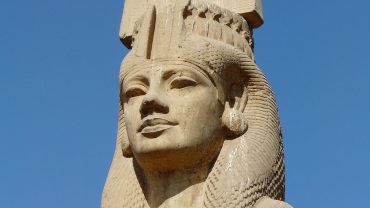

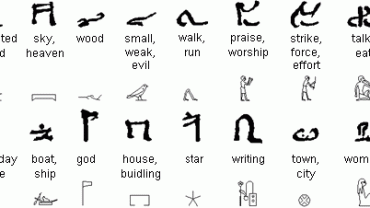











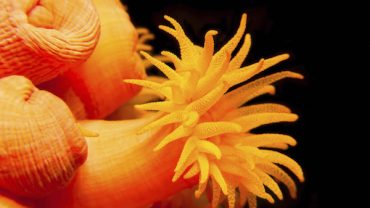

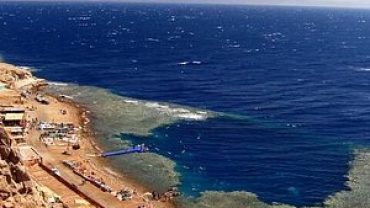


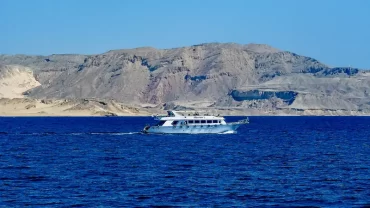




Comment (0)